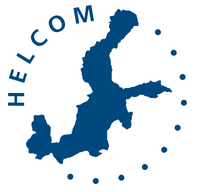The first of the new HELCOM working on the state of the environment and nature conservation in the Baltic Sea, starting today in Pärnu, Estonia, will formulate a concrete work plan regarding the two key themes of the group: monitoring and assessment as well as nature conservation and biodiversity. The 5-day session will discuss, among others, monitoring of benthic habitats, the production of the holistic assessment of the ecosystem health, as well as the modernization of the database on marine protected areas. Monitoring of benthic habitats could be supported e.g. by remote-sensing methods. Photo: Metsähallitus NHS/Jan Ekebom & Mats Westerbom.The future coordinated monitoring of benthic habitats in the Baltic Sea will be a key topic of the Meeting. The HELCOM Monitoring and Assessment states that monitoring in the Baltic Sea should cater for assessments of quality and quantity of habitats and biotopes. Still, at present the recently published HELCOM Monitoring shows limited monitoring of benthic habitats in the Baltic Sea thus there is room for improvements and new joint initiatives. Different tools for assessing biodiversity is another theme that expecting major attention. HELCOM recently agreed to start a project with the aim of producing a 2nd Holistic Assessment of the Ecosystem Health of the Baltic Sea by 2018. Assessing the state of biodiversity will be an important component of the holistic assessment and principles for such analyses will be considered at the meeting. Moreover, the modernization of the HELCOM database on marine protected areas () will be discussed. HELCOM has hosted data on protected areas since 2006 and improvements regarding the structure and contents of the database have now been considered necessary. The new database will include data to cater the assessments of ecological coherence of MPAs, management plans and the effectiveness of managing MPAs. The current development work on core indicators will also be reflected on, concerning biodiversity, hazardous substances as well as eutrophication. A major overall aim of the State group is to work across the monitoring-indicators-assessment chain in order to provide a stronger basis for coordinated development of the HELCOM thematic assessment tools. . Documents will be public after the meeting. * * * Note for editors:The working group on the state of the environment and nature conservation (tentative name: ) will cover monitoring and assessment theme as well as nature conservation and biodiversity protection theme. A major aim of the group is to work across the monitoring-indicators-assessment chain in order to provide a stronger basis for coordinated development of the HELCOM thematic assessment tools and a coherent holistic assessment of the ecosystems health, including Baltic Sea Pressure Index and Impact Index. The Baltic Marine Environment Protection Commission, usually referred to as , is an intergovernmental organization of the nine Baltic Sea coastal countries and the European Union working to protect the marine environment of the Baltic Sea from all sources of pollution and to ensure safety of navigation in the region. Since 1974, HELCOM has been the governing body of the ‘Convention on the Protection of the Marine Environment of the Baltic Sea Area’, more commonly known as the Helsinki Convention. * * * For further information, please contact:Ulla Li Zweifel Professional Secretary HELCOM Tel. +358 46 850 9198 Skype: helcom64 E-mail: ullali.zweifel(at)helcom.fiJohanna Laurila Information Secretary HELCOM Tel: +358 40 523 8988 Skype: helcom70 E-mail: johanna.laurila(at)helcom.fi
First meeting addresses monitoring of benthic habitats, production of the holistic assessment of the ecosystem health, as well as modernization of the database on marine protected areas.
